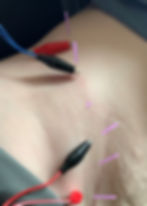Dry Needling for the Pelvic Floor
- All In Physical Therapy
- Jul 25, 2022
- 1 min read
Updated: Sep 29
Functional dry needling is known to help restore balance of muscle tissue, lessen fascial restrictions, and improve functional mobility. Pelvic floor musculature is no exception.

Pelvic floor dry needling techniques are aimed at treatment of the spine, abdomen, hips, pelvic region, and legs with the goal of affecting muscles and nerves involved with urinary incontinence, diastasis recti, constipation, pudendal neuralgia, IBS, pregnancy, prolapse, endometriosis, interstitial cystitis, lower back pain, hip involvement, and general pelvic discomfort. Neuromodulation (electrical unit with probes/attachments) can also be used with the needles to help promote a localized twitch response, improve longevity of treatment response, create a larger global impact, and aim at tissue specificity. This technique has shown to help inhibit pain allowing for functional changes post treatment, hence integration of good nerve and muscle performance with movements. In conjunction with neuromodulation techniques, dry needling treatment is super effective with restoring balance of tissues, reducing pain, and improving nerve regeneration.

At All In, our pelvic floor therapist has utilized dry needling techniques in the clinic resulting in nerve regeneration (improved sensation), increased activation with Kegel activation, reducing lower back pain during pregnancy, perineal pain reduction, promoting muscle movements, and reducing fascial restrictions. For more information on how Dry Needling may help you, contact All In to schedule a consultation.
-Angeline Petersen, PT, DP